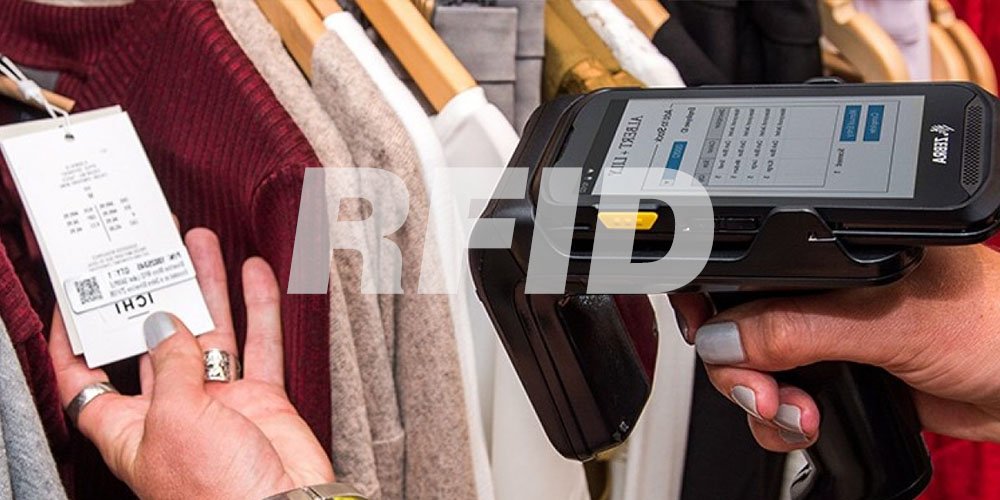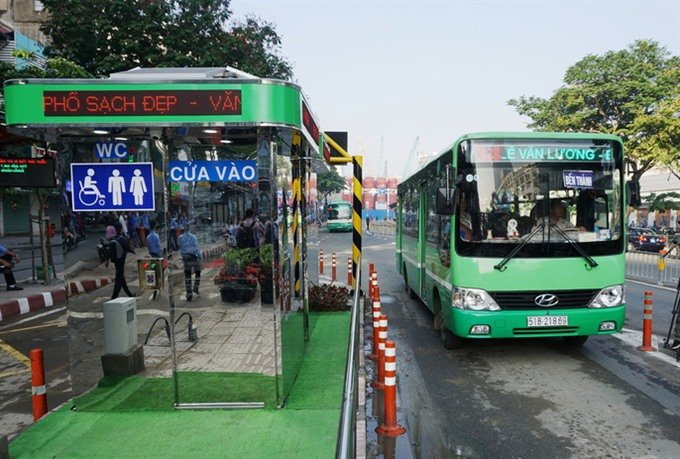HIGHLIGHTS
- RFID (Radio Frequency Identification) is an object identification technology using radio waves
- Although each RFID system has different device types and complexity, they all contain at least four components: a reader, tag , antenna, and server.
- RFID is a remarkable business tool for many aspects of business, including Logistics & Supply Chain Management.
- The global RFID market is estimated to be worth $10.7 billion in 2021, and it is expected to reach $17.4 billion by 2026, according to Globenewswire.
FULL ARTICLE
What is RFID?
RFID (Radio Frequency Identification) is an object identification technology using radio waves (a type of electromagnetic wave), from which it is possible to monitor, manage or track each object in real-time.
Due to the use of electromagnetic waves, there are 3 main frequency bands used for RFID transmission: low frequency, high frequency, and super-high frequency.
- Low frequency: 125-134 kHz
- Reading range: Contact to 10 cm
- High frequency: 13.56 MHz
- Reading range: Near contact to 30 cm
- Super-high frequency: includes 2 types of tags: active and passive RFID tags
- Active RFID tag (receiving power from the battery, large reading distance)
- Frequency: 433 MHz
- Reading range: 30 m to more than 100 m
- Active RFID tag (receiving power from the battery, large reading distance)
- Passive RFID tag (receiving power from the reader, short reading distance)
- Frequency: 860 – 960 MHz
- Reading range: Near contact to 25 m
- Passive RFID tag (receiving power from the reader, short reading distance)
Working principle
In terms of structure, although each RFID system has different device types and complexity, they all contain at least four components: a reader, tag, antenna, and server.

The RFID tags contain microchips and antennas. When inserted into the reader’s broadcast area, the tag will receive energy and transmit data from the chip to the reader. This data will then be transferred to the host computer through the communication port or cyberspace. From there, the information will be collected and processed according to the operator’s purpose.
Why is RFID considered the future of the supply chain?
Outstanding in capacity
In terms of information storage, barcodes can only contain a limited number of alphanumeric characters while RFID tags can hold up to several thousand bits of capacity, including the product’s name, previous location, expiry date, time and place of production, receipt, packing, and shipping, etc. As a result, businesses can control goods more thoroughly.
Labor-saving system
In addition, RFID tags can scan in groups and add more information, reducing the effort of manual scanning and data entry. Therefore, it requires less staff, helping to allocate resources more efficiently as workers do not have to spend time on time-consuming procedures such as scanning barcodes, finding lost items or counting goods. This allows them to focus on other tasks and get things done faster.
Furthermore, to read a barcode, the employer must stand directly in front of the product, pointing the scanner at the code. An RFID tag only requires the reader to be within a specified range to the tag to automatically read it correctly. A test conducted by Northern Apex Corporation showed an inventory sample processing in 37.9 seconds using barcodes, but just over 1 second using RFID. Because of this amazing operating speed, the RFID system is capable of reading an entire warehouse in just a few minutes, reducing inventory time to hours.

Real-time inventory tracking
With RFID, companies are always updated with exactly how much product they have. In addition, RFID can simplify the process of recording in and out of the warehouse, providing the exact location of the goods in the warehouse to make them easier to find. From there, managers can make timely decisions, find the optimal inventory level so that there are no excess products and waste storage costs, and know which goods are selling well to make the most profitable business plan.
Increased accuracy
According to Cybra, an RFID technology development company with 35 years of software development experience in the US, manufacturers and distributors who have implemented RFID technology into their supply chains have experienced an 80 percent improvement in shipping and picking. As a result, companies can save large sums of money due to fewer shipping and packaging errors. In addition, because RFID uses electromagnetic wave technology, it is less dependent on human factors, so errors in manual code scanning and paper input can be greatly reduced.
Prevent loss and theft
RFID tagging also helps companies increase security by tracking every item that is being stored, distributed, or restocked, no matter where those items are in the supply chain. Therefore businesses can receive updates whenever a product is lost. This is especially important for high-end products such as computers, televisions, and cars. Sometimes, even the mere presence of an RFID tag can reduce the risk of theft. As a result, companies can avoid losing assets or reducing brand reputation.
How ZARA uses RFID
Manage goods more efficiently
Since 2014, Zara has started to apply this technology to its EAS hard tags. As a result, they can check multiple boxes without opening them. Through this technology, inventory time can be significantly reduced from 24 hours to only 2 hours, and inventory frequency from six months can also be optimized to once every six weeks. It can be seen that RFID technology is an effective tool to help Zara easily control the sales rate of items in both physical stores and online stores.

Improve customer experience
If a ZARA store encounters an out-of-stock situation, employees can quickly determine the presence of products in neighboring stores through the product ID and immediately replenish. Plus, when an item has been sold, the inventory department is instantly notified so that the exact item can be quickly replaced. All of the above is to ensure that goods at ZARA are always available at the right time and customers’ efforts are not wasted.
Enhance security and save costs
Zara decided to insert their RFID tag inside the anti-theft sensor. The sensor’s plastic cover protects the chip, allowing it to be removed at the checkout and reused many times.
Furthermore, the installation of an RFID scanner at the counter also ensures that no product can leave the store without an RFID tag. When combing with sales data and videos data, ZARA can compare whether the number of items leaving the store differs from the quantity purchased at a particular time. This information will then be used to monitor general trends or keep as evidence in response to theft.
Future prospects
According to Globenewswire, a global press release distribution services company, the global RFID market is estimated to be worth $10.7 billion in 2021, and it is expected to reach $17.4 billion by 2026. This market has such promising growth potential due to several factors, including technological advancement leading to the appearance of better and cheaper RFID devices, as well as the adoption of this technology in many other professions.

However, in Vietnam, RFID has not been popular, as only a few small projects have been implemented. An example is the installation of RFID devices at bus stops in HCMC to help bus fleet operators collect information about trips. Therefore, they can ensure that drivers are complying with regulations, schedules and make it easier for passengers to receive information about the bus routes.
However, due to the high cost, while science, technology, and management skills in Vietnam are not developed enough, RFID is still a wasted potential in our country. And if RFID can be widely applied here, Vietnamese enterprises can improve operational efficiency, reduce costs and better meet the requirements of consumers, thereby increasing competitive edges over other businesses in the world.
Gia Don













